READY TO GET STARTED?
REQUEST A FREE ESTIMATE
Fill out the form below or call (888) 466-7849 for a free, no-obligation estimate.
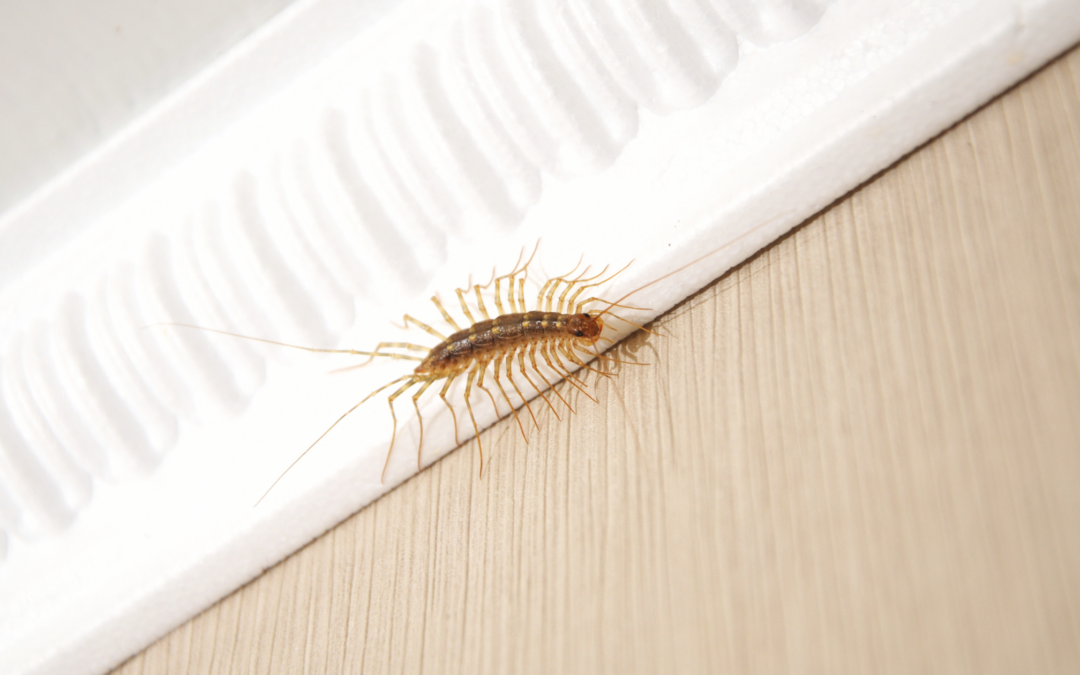
Centipedes: those creepy crawlers that send shivers down our spines when we encounter them scurrying across the floor. But beyond their unsettling appearance, many homeowners wonder: can centipedes bite or sting? Let’s dive into the facts and debunk the myths surrounding these household pests.
Centipedes are elongated arthropods with multiple pairs of legs, ranging from 15 to 177 pairs depending on the species. They typically have a flattened body and are light brown to dark brown or even reddish in color. One distinguishing feature is their long antennae and the pair of venomous claws located behind their head, known as forcipules.
Spotting a centipede indoors is often the first sign of an infestation. They tend to hide in dark, damp areas such as basements, bathrooms, and crawl spaces during the day and come out at night to hunt for prey.
While centipedes may look intimidating, they are generally not aggressive towards humans. However, if threatened or mishandled, they can deliver a painful bite using their venomous claws. While the venom is not typically dangerous to humans, it can cause localized pain and swelling.
Centipedes can be beneficial to your property by preying on other household pests such as cockroaches, spiders, and silverfish. However, their presence in large numbers can indicate an underlying pest problem that needs to be addressed.
Prevention is key when it comes to controlling centipedes in your home. Here are some tips to keep them at bay:
Don’t let centipedes and other household pests invade your space. Take proactive steps to protect your home and family by partnering with a trusted pest control company. Contact a pest control company near you today for a free pest control quote and let our experienced technicians help you reclaim your home from unwanted intruders.
While centipedes can bite if provoked, they are generally not a significant threat to humans. However, their presence can indicate underlying pest issues that need to be addressed. By following preventive measures and seeking professional pest control assistance when needed, you can effectively manage centipedes and enjoy a pest-free home environment.
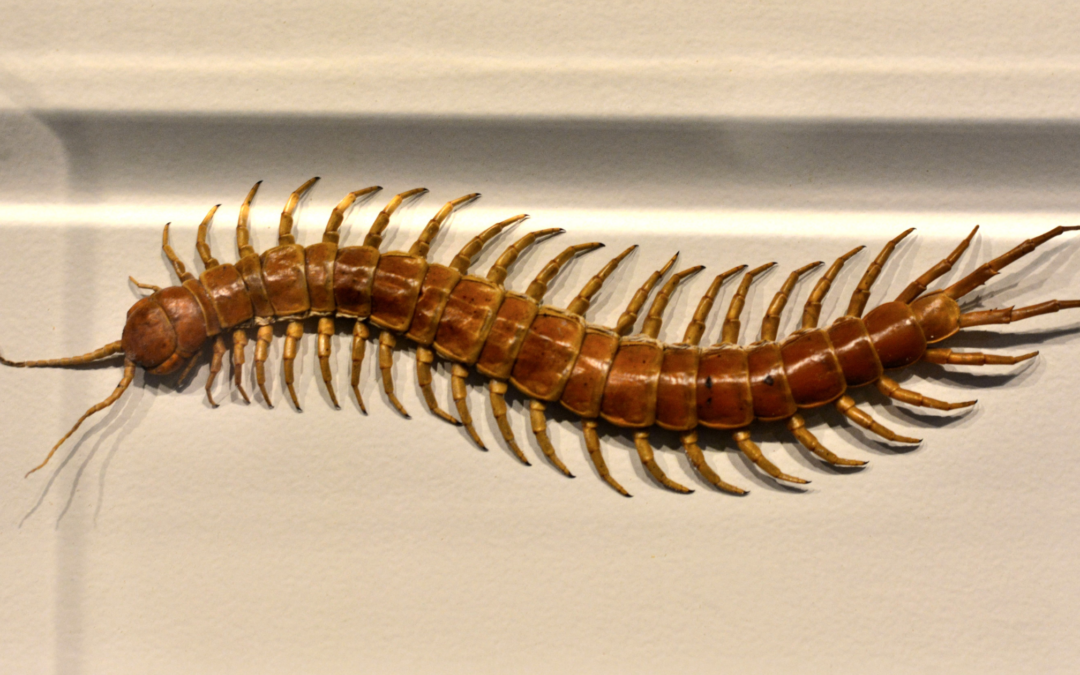
Centipedes, with their numerous legs and speedy movements, are not exactly a welcome sight in any home. As common household pests, centipedes can be a nuisance, but understanding what attracts centipedes to your home is the first step towards effective pest control. In this blog post, we’ll delve into the basics of centipedes, how they find their way indoors, signs of infestation, and crucial tips for prevention and elimination.
Centipedes are arthropods belonging to the class Chilopoda. Despite their name, centipedes do not have a hundred legs; the number varies depending on the species but typically ranges from 15 to 177 pairs. Known for their long, segmented bodies and swift movements, centipedes are carnivorous, preying on insects and spiders.
Centipedes are attracted to homes for several reasons. Understanding these factors can help you take proactive steps to keep them at bay.
Identifying a centipede infestation early is crucial for effective pest control. Look out for the following signs:
Don’t let centipedes take over your home. Take proactive steps and ensure a pest-free living environment. Our expert pest control team in Georgia is ready to assist you. Request a free pest control quote today and enjoy the peace of mind that comes with a centipede-free home.
Remember, early detection and preventive measures are crucial in keeping centipedes and other household pests at bay. With the right approach, you can enjoy a comfortable and pest-free living space in Georgia.
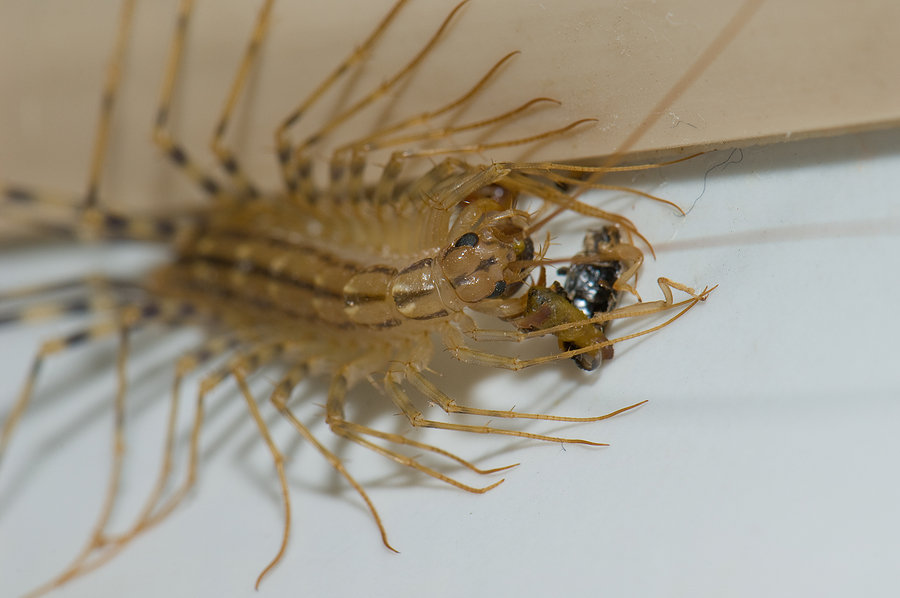
As the fall season approaches in Georgia, homeowners may find themselves facing a variety of household pests, including the unsettling presence of house centipedes. These long-legged creatures can be quite a nuisance, but fear not – in this blog post, we’ll delve into what you need to know about house centipedes in Georgia, from identification and their common hiding spots to whether they pose a threat to humans. We’ll also provide practical tips on how to prevent or get rid of them with the help of professional pest control services.
House centipedes are easily recognizable by their unique appearance. They have long, slender bodies that can range from 1 to 1.5 inches in length and are covered in numerous pairs of legs. Despite their name, they typically have 15 pairs of legs, giving them a creepy-crawly appearance.
House centipedes thrive in damp, dark environments, making your home an attractive habitat. You may encounter them in areas such as basements, crawlspaces, bathrooms, and even kitchens. They are agile hunters, preying on other insects like cockroaches, spiders, and silverfish, which is why they are often found in proximity to their prey.
The good news is that these centipedes are generally not harmful to humans. They are not known to transmit diseases or bite humans unless they feel threatened. However, their presence can be unsettling, and their appearance can cause anxiety for some homeowners. If you’d rather not share your space with these creatures, there are ways to keep them at bay.
While house centipedes in Georgia may seem unsettling, they are generally harmless to humans. However, their presence can be a sign of underlying pest issues in your home. To ensure a pest-free environment and peace of mind, it’s wise to consult a pest control expert.
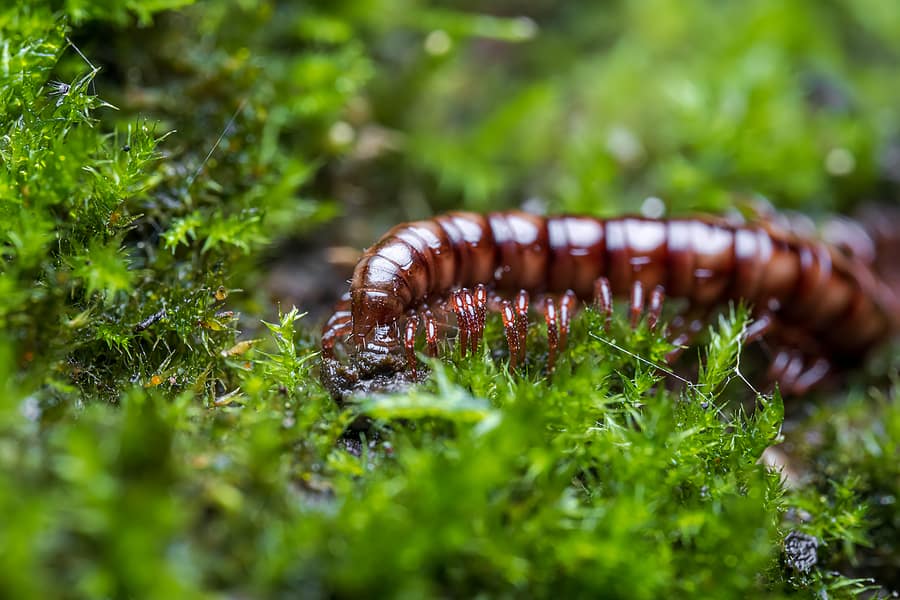
Centipedes are arthropods that will often make their way into your home. Although centipede means “100 legs,” not every centipede actually has that many. Most centipedes prefer dark, damp spaces and are commonly found outdoors under rocks, logs, or piles of leaves. Other species can be found in your home. Here are 5 of the most common type of centipedes you may come across in our area.
House centipedes are found throughout North America and even in Hawaii. They can grow to be 1-1/2″ long and have 15 pairs of legs. Their bodies are yellowish-gray in color with 3 stripes on their backs. They have long antennae. House centipedes are usually found in dark areas of your home, like the basement. They are usually harmless, but will bite you if they are handled. They are quite beneficial to have around as they will eat roaches, moths, termites, and other household pests.
The Eastern Red centipede is found across the East Coast. These centipedes grow to about 2-1/2″ long. Their bodies are red or orange in color with lighter orange legs. They like moisture and will burrow under wet leaves, logs, compost piles, and woodpiles. They are venomous with a very painful bite.
The Eastern Bark centipede can be found in the Eastern United States and Canada westward to the Rocky Mountains. They can grow up to 3″ long. These centipedes vary in color, ranging from solid orange-brown to dark brown. Some species also have an olive colored stripe on their back. Their heads are brownish-red and their antennae and legs are yellow. These centipedes are nocturnal and live under rocks and logs. They are venomous and will bite.
The diamondback soil centipede will grow up to 2″ in length. They have light brown bodies with dark brown diamonds on their backs. They are found throughout North America, typically in gardens rather than inside the home. They live under debris and will burrow into the soil. They don’t have eyes and don’t bite. They secrete a poisonous substance from the underside of their bodies in an attempt to ward off predators but they are not considered a threat to humans.
Brown centipedes originated in Europe (where they are quite common) but can now be found on the Eastern seaboard of the United States. They grow to about 1″ in length. They have brown bodies, long antennae, and long tails. They hunt at night and can often be found in dark areas of the home, such as the basement. They do have venomous fangs but they are so small that they do not pose any threat to humans. In fact, they are beneficial to have around because they eat other household pests.
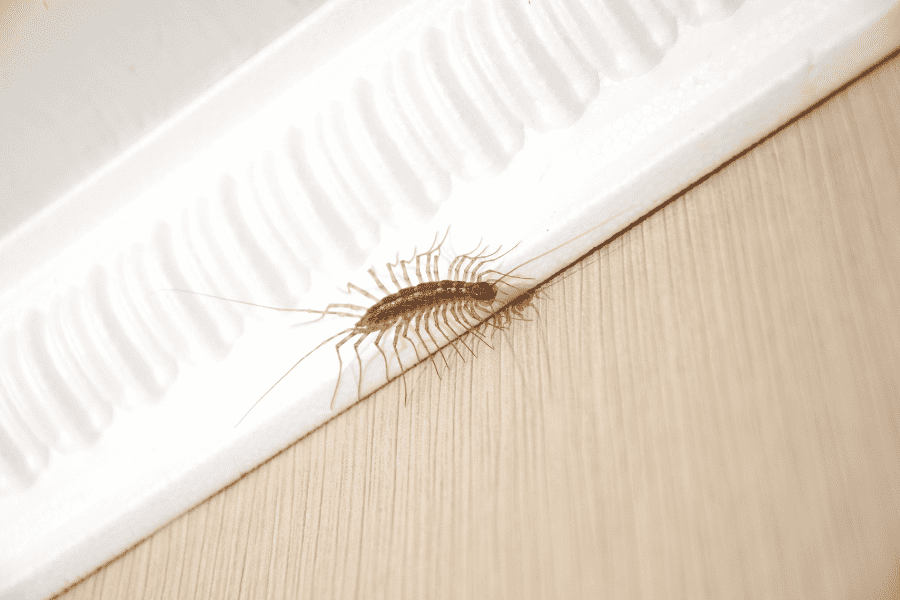
Summer is a time of warmth, sunshine, and relaxation. Unfortunately, it’s also a time when a variety of pests are most active. From ants and flies to roaches and centipedes, these insects can be a major annoyance and even a health hazard. Discover common summer pests below:
Ants are a common sight in the summertime, especially in kitchens and pantries where they search for food. To prevent ants from invading your home, make sure to keep your kitchen clean and free of crumbs and spills. Store food in airtight containers and keep ripe fruit in the refrigerator. Sealing cracks and holes in your home’s foundation and walls can also prevent ants from entering.
Flies are a common summertime pest, buzzing around and spreading germs wherever they land. To prevent flies from invading your home, make sure to keep doors and windows closed or screened, especially during the hottest parts of the day. Keep your kitchen clean and dispose of garbage regularly.
Roaches are another unwelcome summertime pest. They can carry diseases and trigger allergies in some people. To prevent roaches from entering your home, seal any cracks or gaps in your home’s foundation and walls. Keep your kitchen clean and free of crumbs, and store food in airtight containers.
Centipedes can appear creepy, with many legs! They are often found in dark, damp areas such as basements and bathrooms. To prevent centipedes from invading your home, keep these areas dry and well-ventilated. Seal any cracks or gaps in your home’s foundation and walls.
If you begin seeing these summer pests around your home, give your local pest control company a call for a free inspection and a customized treatment and prevention plan!